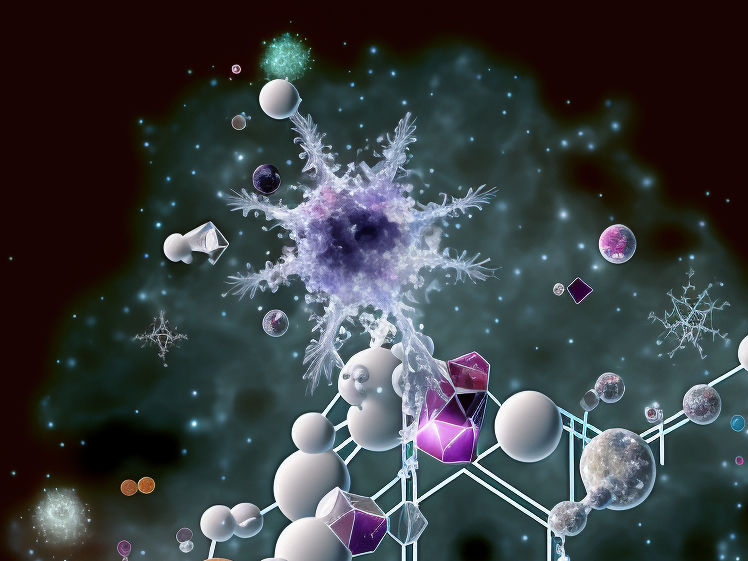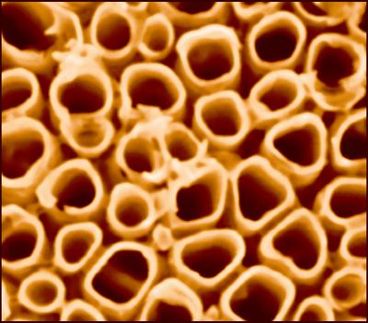Space Telescope unveils the dark side of pre-stellar ice chemistry
Chameleon I hides a wealth of frozen molecules
Advertisement
The discovery of diverse ices in the darkest, coldest regions of a molecular cloud measured to date has been announced by an international team of astronomers using the NASA/ESA/CSA James Webb Space Telescope. This result allows astronomers to examine the simple icy molecules that will be incorporated into future exoplanets, while opening a new window on the origin of more complex molecules that are the first step in the creation of the building blocks of life.

Symbolic image
Computer-generated image
If you want to build a habitable planet, ices are a vital ingredient as they are the main carriers of several key light elements — namely carbon, hydrogen, oxygen, nitrogen, and sulphur (referred to collectively as CHONS). These elements are important ingredients in both planetary atmospheres and molecules like sugars, alcohols, and simple amino acids. In our Solar System, it is thought they were delivered to Earth’s surface by impacts with icy comets or asteroids. Furthermore, astronomers believe such ices were most likely already present in the dark cloud of cold dust and gas that would eventually collapse to make the Solar System. In these regions of space, icy dust grains provide a unique setting for atoms and molecules to meet, which can trigger chemical reactions that form very common substances like water. Detailed laboratory studies have further shown that some simple prebiotic molecules can form under these icy conditions.
Now an in-depth inventory of the deepest, coldest ices measured to date in a molecular cloud has been announced by an international team of astronomers using the NASA/ESA/CSA James Webb Space Telescope. The team targeted ices buried in a particularly cold, dense and difficult to investigate region of the Chameleon I molecular cloud, a region roughly 600 light-years from Earth which is currently in the process of forming dozens of young stars.
In addition to simple ices like water, the team was able to identify frozen forms of a wide range of molecules, from carbon dioxide, ammonia, and methane, to the complex organic molecule methanol. This is the most comprehensive census to date of the icy ingredients available to make future generations of stars and planets, before they are heated during the formation of young stars. These icy grains grow in size as they are funnelled into the protoplanetary discs of gas and dust around these young stars, essentially allowing astronomers to study all the potential icy molecules that will be incorporated into future exoplanets.
“Our results provide insights into the initial, dark chemistry stage of the formation of ice on the interstellar dust grains that will grow into the centimetre-sized pebbles from which planets form in discs,” said Melissa McClure, an astronomer at Leiden Observatory who is the principal investigator of the observing program and lead author of the paper describing this result.
These observations were made with three instruments on JWST, including MIRI, developed jointly by NASA, ESA and a European consortium. The Leiden group including Prof. Ewine van Dishoeck also measured ice spectra in the laboratory to compare with the observational data allowing identification of the different ice species. “The quality and sensitivity of these early JWST data exceeds our expectations: we are able to observe sources a thousand times fainter than was possible before. We even detect the 13-C version of CO2 ice!” stresses Prof. van Dishoeck, who is also a member of the Max Planck Institute for Extraterrestrial Physics (MPE).
This research forms part of the Ice Age project, one of Webb's 13 Early Release Science' programs. These observations are designed to showcase Webb’s observing capabilities and allow the astronomical community to learn how to get the best from its instruments. The Ice Age team has already planned further observations, and hopes to trace out the journey of ices from their formation through to the assemblage of icy comets.
“It is extremely exciting to reveal the composition of dust icy mantles in dark and dense regions of interstellar clouds,” adds Prof. Paola Caselli, director of the Center for Astrochemical Studies at MPE, who also participated in the study. “These regions are the precursors of stellar systems like our own and at least part of these ices, including the complex organic molecules that are precursors of prebiotic species, will be delivered to future planetary systems. Finally, thanks to JWST and the IceAge work, we can quantitatively compare observations of interstellar ice with our detailed gas-grain chemical models. Surface chemistry is the least understood, so these data are precious.” Caselli concludes.






























































